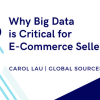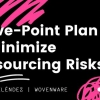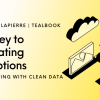Pokemon Go signals the mainstream arrival of augmented reality (AR). From here on in, virtual reality (VR) will always be the poorer cousin – or bridesmaid if you will, and never the bride – in the fight for digital’s push out through the screen into reality.
This new (albeit long-pending) medium of AR will have a huge impact on local and B2C advertising. In fact you might argue it already has, adding billions to the valuation of Nintendo after just a week since Pokemon Go launched – a truly remarkable week.
So how and why will this new AR development have an impact on B2B and the enterprise?
Generally speaking, in terms of media we’re all consumers before we’re employees and so the baseline of consumer media consumption drives the baseline of business media consumption.
The growth of the web, for example, was driven by consumer use not by business. The business case came after early adopters saw the opportunity and stumbled upon early revenue. Business ultimately followed the consumer traffic and went where the money clearly was.
But the impact that had on the way businesses communicated was profound. People were still telling me in 2000 that the internet was a fad. What business doesn’t have a website now? Let alone a digital-first, mobile strategy?
So, if the medium is the message, then consumers are about to get their game on and dive into an augmented world that will only deepen. Early reports of Pokemon Go’s engagement success making it bigger than many huge digital properties clearly points to a major media shift. This was AR’s moment. We’ll never forget it, I suspect.
Ultimately this means that the new normal for consumer interaction has taken its first mainstream steps down the augmented reality road. The bar is thus rising, and being contextual out in the real world is the new competitive advantage for early-moving B2B propositions.
Mark Hillary’s fantastic recent piece elaborates on the impact to CX and reinforces the need to start preparing for a major shift.
With Microsoft’s HoloLens, Meta’s glasses and Google Glass 2.0 (to name the pack-leading three) jostling for position in the AR space (and with Magic Leap, Samsung and Sony et al hot on their heels and even rumours – unsurprisingly – surrounding Apple’s AR plans) the enterprise needs to start taking this disruption seriously and to begin the process of thinking about how gaming, and specifically AR gaming, must become an important part of its strategy.
I’m not talking about paying Pokemon Go to ensure an extremely rare Pokemon shows up deep in the bowels of IBM’s South Bank HQ. Having droves of random people swamp the building is no business driver after all. And I’m not talking about getting your agency to plan out an impressive amount of in-game advertising either. because that’s just, well, more advertising.
No, I’m talking about how B2B businesses can and must get ahead of the imminent curve by embracing gaming and this new AR channel to drive engagement and business outcomes – and they can drive engagement and business outcomes through AR. Any business whose customers move through the fourth dimension will find AR relevant.
And before you say you don’t need to worry about it. That it’s not a threat…
“Neither RedBox nor Netflix are even on the radar screen in terms of competition,” said Blockbuster CEO Jim Keyes, speaking to the Motley Fool in 2008.
We all know what happened next. And if you still need more convincing than that then I recommend looking at this study on Millennials and video adoption.
If you are ready to engage the AR disruption ahead then here are the first four questions I’d seek answers to, urgently:
- What types of games do your clients and prospects play? Puzzles? Golf? Platform?
- What knowledge pathways/thought leadership journeys are you encouraging clients & prospects to explore? And why? And to what end?
- What do your clients and prospects want from you? And why? And to what end?
- Where do your clients and prospects frequently go that non-clients would not have access to?
When, and not if, the scale of the opportunity dawns (if it hasn’t already) on your organisation, having these answers will put you in the driving seat to steer your colleagues and organisation through this disruption.
Or you can take your chances like Blockbuster, of course.
Disclosure: I write this as the ex-publisher of, and now a marketing consultant for, Outsource, and a disruptive marketing consultant for others including for F84Games.com – a Hollywood-based, world-leading game and engagement agency that has spent 15 years serving Disney, Mattel, Warner Brothers etc.








